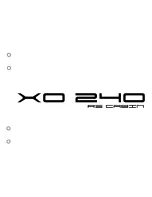
1/108
INTRODUCTION
THE USERS OF THE BOAT ARE INFORMED OF THE FOLLOWING:
This user guide/owner's manual is not a maintenance or repair guide. In case of difficulty
do not hesitate to call on the services of your concessionaire JEANNEAU.
Any alterations which may affect the safety specifications of the boat must be assessed,
carried out and recorded by persons qualified to do so. Any change in the distribution of the
vessel's mass (adding a radar, altering the mast, changing an engine, etc) may affect the
stability, trim and performance of your boat.
The SPBI shipyards may not be held responsible for any alterations which they have not
approved.
The complete crew must be equipped appropriately.
In numerous countries, a licence, an authorization or a training course is requested. Make
sure you have this legal authorization before you use your boat.
Adapt the use of your boat to her condition that wears out with time and use.
Any boat, however solid she may be, may be severely damaged if badly used. This is not
compatible with safe navigation. Always adapt the speed and direction of your boat to the
conditions of the sea.
The boat shall not be loaded more with than the maximum load recommended by the
builder, in particular the total weight of the food supplies, of the different equipment that are not
supplied by the builder and of the persons on board.
The weight of the boat shall be properly distributed.
The stability is reduced when you add weight in the upper parts.
In case of heavy weather, the hatches, lockers and doors shall be closed in order to
minimize the risk of water coming in.
Breaking waves are a serious threat to stability.
The water in the bilge shall be kept at its minimum.
The stability may be reduced when you tow a boat or when you lift heavy weights with the
davits or the boom.
If your boat is equipped with a liferaft, carefully read the instructions. The boat must have
on board all the proper safety equipment (lifejackets, buoys, harness, flares, liferafts, etc.)
depending on the type of vessel, its certification, the country, the weather conditions
encountered, etc.
The crew must be familiar with the use of all the safety equipment and the emergency
safety procedures (MOB, towing etc.). Sailing schools organise regular training sessions.
Summary of Contents for 755 Marlin
Page 1: ...MERRY FISHER 755 MARLIN OWNER S MANUAL 951795 Index E ...
Page 2: ......
Page 4: ......
Page 8: ......
Page 10: ......
Page 16: ......
Page 28: ...24 108 BILGE PUMP SYSTEM LOCATION FISHING version COMFORT version ...
Page 33: ...29 108 HULL MAINTENANCE OF THE HULL LIFTING 3 ...
Page 36: ......
Page 42: ......
Page 47: ...43 108 Cockpit bench seat Cockpit fixed box 4 DECK ...
Page 48: ...44 108 Fishpond fishing version Cockpit table ...
Page 50: ......
Page 51: ...47 108 STEERING SYSTEM STEERING GEAR 5 ...
Page 52: ...48 108 LOCATION STEERING SYSTEM ...
Page 54: ......
Page 55: ...51 108 INTERIOR INTRODUCTION INTERIOR MAINTENANCE MAINTENANCE OF FABRICS 6 ...
Page 56: ...52 108 INTRODUCTION VERSION FISHING DECK SALOON INTERIOR ACCOMMODATION ...
Page 57: ...53 108 VERSION COMFORT DECK INTERIOR ACCOMMODATION 6 INTERIOR ...
Page 60: ...56 108 Pilot seat Leaning post Foldaway seat Saloon table ...
Page 61: ...57 108 WATER AND SEWAGE WATER WATER TANKS WATER SYSTEM DISTRIBUTION WATER SYSTEM DRAINAGE 7 ...
Page 68: ......
Page 69: ...65 108 ELECTRICAL EQUIPMENT 12 V DC SYSTEM ELECTRICAL CIRCUIT 110 220 V EQUIPMENT 8 ...






































